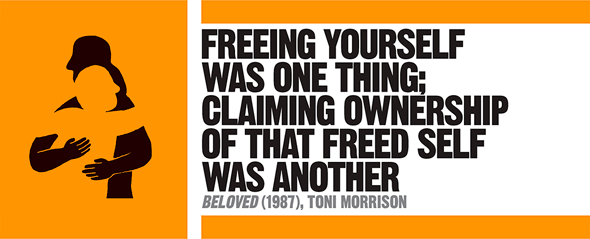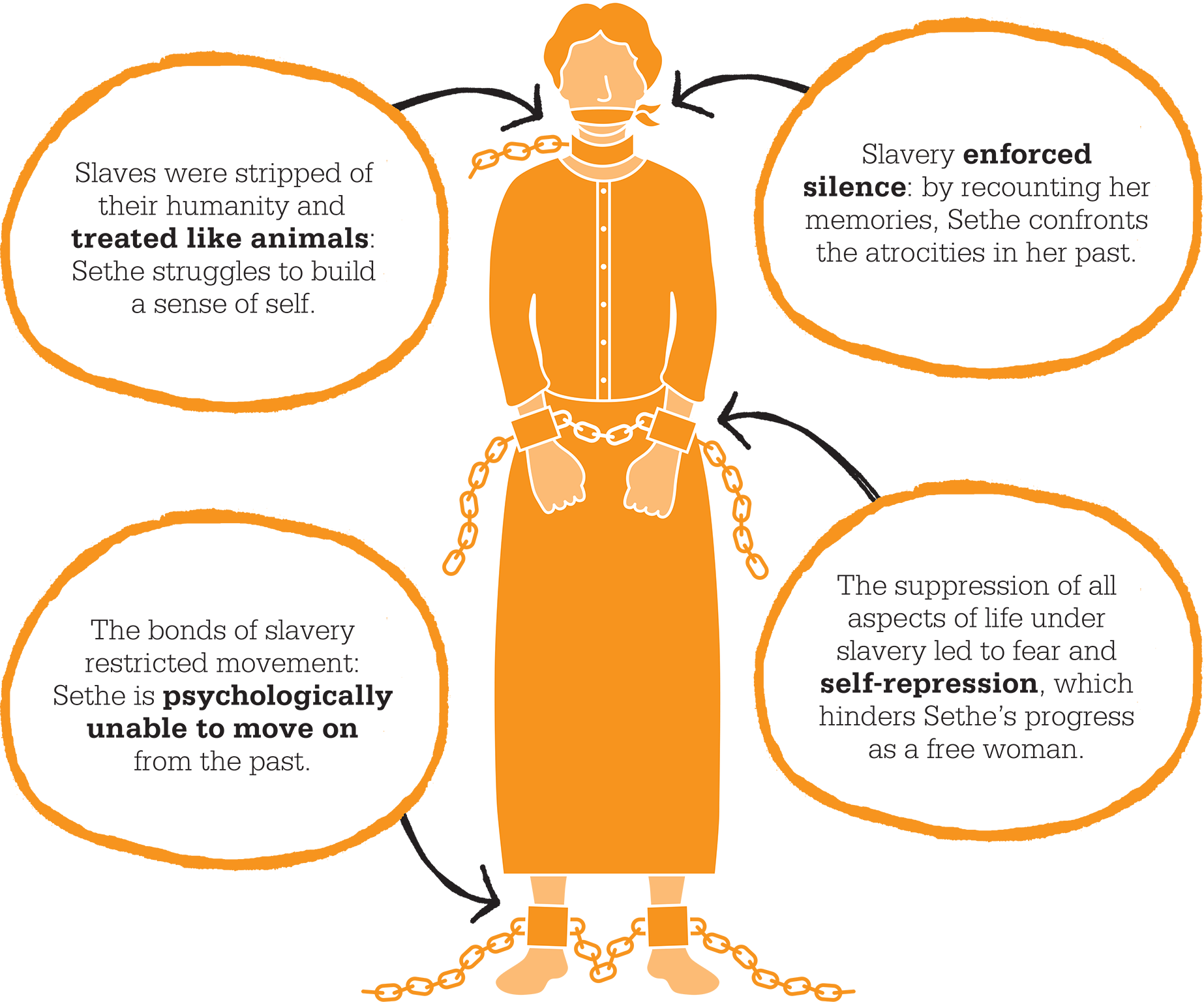The Literature Book (Big Ideas Simply Explained) (2016)


IN CONTEXT
FOCUS
Contemporary African-American literature
BEFORE
1953 James Baldwin’s Go Tell It on the Mountain captures the pain of life in a racist society.
1976 Alex Haley’s novel Roots: The Saga of an American Family traces family history back to slavery.
1982 Alice Walker reveals the hardships of African-American women’s lives in the 1930s in The Color Purple.
AFTER
1997 Junot Díaz’s sizzling prose paints a picture of the Dominican-American diaspora in his story collection Drown.
1998 Edwidge Danticat recounts the 1937 massacre of Haitian cane workers in The Farming of Bones.
By the end of the 20th century, African-American writing had grown from the slave narratives of 150 years earlier into a major canon of American literature. From educational works such as Booker T Washington’s Up From Slavery(1901), through the vibrant literature of the 1920s Harlem Renaissance, it reached a high point with Ralph Ellison’s philosophical novel Invisible Man (1952). During the late 1950s and the 1960s, young black writers were fuelled by the Civil Rights and Black Power movements.
Toni Morrison’s novel Beloved emerged during a new flourishing of black writing that began in the 1970s, when authors such as Alex Haley, Maya Angelou, and Alice Walker sought new ways to explore race, identity, and the legacies of slavery. This affirmation of the power of black writing has continued into the present day with “hyphenated American” authors, including Dominican-American Junot Díaz and Haitian-American Edwidge Danticat.
Memory and history
In her early novels - The Bluest Eye, Sula, and Song of Solomon - Morrison focused on the African-American experience within her own lifetime, offering an original voice on themes such as moral and spiritual revival, white standards of beauty, and sisterhood. Her Pulitzer Prize-winning novel Beloved is regarded as one of the most influential works in African-American literature. Dedicated to the “Sixty Million and more” who are believed to have died on slave ships and in captivity, it reclaims the ascendancy of memory and history in black identity, resolving symbolically issues that are still swept aside in present-day reality.
Inspired by the real-life case of Margaret Garner, a fugitive slave who killed her baby after she was recaptured by marshals in Cincinnati, Ohio, Beloved is a piece of social history with a strong political agenda, but it undermines expectations of its genre with its use of expressionist fantasy and rhetorical stylization. Morrison also asserts her roots and her pride in African folklore by incorporating the cultural focus, origins, and mythology of black Americans into the novel. She employs the rhythms and speech patterns of African-American discourse, not as a simple pastiche of black speech but in a lyrical, incantatory voice, often making use of poetic repetitions at the beginning and the end of interior monologues: “Beloved is my sister”, “She’s mine, Beloved. She’s mine”, “I am Beloved and she is mine”. The author invents a feminine style of narrative built around motherhood, sisterhood, Afro-Christian revivalism, tribal rites, and ghosts. She asks the reader to engage with a retelling of history that is built on an easy intimacy with the supernatural.
The book begins in 1873 in Cincinnati, Ohio. Slavery has been abolished but racism is still rife. Sethe, a former slave, and her 18-year-old daughter Denver live in a home haunted by a spiteful baby spirit named 124, after the number of their house on Bluestone Road. Sethe’s two sons ran away years ago and her mother-in-law, Baby Suggs, is dead. The arrival of Paul D, who lived as a slave with Sethe at Sweet Home, Kentucky, starts a process that unlocks the past.
"Not a house in the country ain’t packed to its rafters with some dead Negro’s grief."
Beloved

Freed slaves, such as these men photographed during the US Civil War, were technically free, but they were still affected by segregation and the psychological aftermath of slavery.
The past in the present
Morrison’s time-travelling story slips back and forth between Sethe’s present and events 20 years earlier, when slaves fleeing north were subject to Fugitive Slave laws that allowed owners to cross into free states to reclaim their property. Piece by piece a story emerges. Sethe and her husband, Halle, planned a break for freedom, unable to endure their treatment at the hands of the new governor of Sweet Home, known as “schoolteacher”. Heavily pregnant, Sethe sent her two small boys and baby daughter on ahead. When Halle failed to arrive at their agreed meeting place, Sethe travelled on alone, giving birth to her new daughter on the way, with the help of a white girl called Amy Denver. After reaching safety in Cincinnati, she found temporary happiness with her mother-in-law Baby Suggs, a freed slave. A horrific event - the details of which are revealed later in the novel - is triggered by the arrival of schoolteacher with a posse to take Sethe and her children back to the farm.
Moral complexity
Good and evil are not binary opposites in this story. At its core is a terrible action committed out of profound love. The supposedly “free” society that sympathetic white folks offer to released slaves is built on unchallenged racism and segregation. The absurd notion of “good” and “bad” slave owners is addressed by Paul D as he re-examines life at Sweet Home under the benign Mr Garner: on other farms male slaves were gelded to make them manageable, but Garner’s men “are men”. After Garner’s death, the much harsher regime instituted by schoolteacher enabled them to know the real condition of their slavery for the first time, and Paul D realizes they had only been men on home soil by virtue of Garner’s protection. “One step off that ground and they were trespassers among the human race.”

Slavery is a psychological as well as a physical condition. While slaves are bound in literal chains - shackles, gags, iron neck collars - the psychological chains that Sethe is left with as an ex-slave mean that every area of her life is infected.
"I never talked about it. Not to a soul. Sang it sometimes, but I never told a soul."
Beloved
Remembered pain
Self-repression brought on by years of sociopolitical repression is a major theme in the novel. Buried memories are the emotional shards that make self-determination so hard, and which are drawn out as a psychological necessity. Morrison suggests that black Americans can begin living in the present only by confronting the past. The fragments of earlier events in Sethe’s and Paul D’s lives slowly come to the surface throughout the novel, coalescing into a horrific account of slavery conditions in the South - tales that are too terrible to relate as a consecutive narrative.
“Rememory” is the invented word that Sethe uses for the kind of remembering that takes former slaves deeper into the past to the appalling places that are always waiting to reclaim them. Sethe’s rememories include the time that schoolteacher instructed his nephew to list her human and animal characteristics, and the occasion when his boys pinned her down and drank her breast milk. Paul D keeps his memories in a rusted “tobacco tin buried in his chest where a red heart used to be”. Baby Suggs remembers the births of seven children from different fathers and losing them all.
Beloved
The embodiment of the hurtful past is Beloved, a young woman in unspoiled shoes and a silk dress who insinuates herself into the household after Paul D drives away the baby poltergeist. This attention-seeking woman with baby-smooth skin is violently selfish and has an inexplicable knowledge of Sethe’s past. Sethe is slow to recognize what for Denver is obvious. Beloved is a revenant (a person who has died but come back to life): Sethe’s dead baby grown to womanhood and craving the love she has been denied. She is the personification of Sethe’s guilt, both destroyer and enabler, who coaxes out stories that have been too difficult to articulate. Her own story in child-speak recalls the cramped hold of slave ships and bodies tipped into the sea. Beloved seems to embody the suffering of the 60 million and more, but nothing is certain.
The true element to be “beloved” is a sense of self. Reclaiming self, a central theme in Morrison’s work, is an imperative as there is nothing in the landscape for ex-slaves to own. Robbed of normal family life, mated, traded, and their offspring sold on, slaves are defined by their enslavement. Starting with these first tentative steps taken in freedom, the events in the novel presage the long road ahead. In the 1950s the protagonist of Ellison’s Invisible Man was still in search of a self, and we can hear the first notes of Martin Luther King’s Civil Rights rhetoric in Baby Suggs’ sermon in the forest: “in this here place, we flesh; flesh that weeps, laughs; flesh that dances on bare feet in grass. Love it.” Pride in race, sex, and self is the healing medicine, because, as Paul D tells Sethe, “you your best thing”.

African folklore traditions connect with the American present in Beloved: the character of Beloved herself appears to embody the belief that the dead return to Earth in the form of spirits.
TONI MORRISON

Toni Morrison is one of the USA’s most powerful literary voices, and the first African-American woman to win the Nobel Prize in Literature (1993), among her numerous other awards. Born Chloe Anthony Wofford in 1931 into a working-class Ohio family, she grew up with a love of reading, music, and folklore. She gained a BA degree from Howard University and an MA from Cornell. She was married for a short time to Jamaican architect Harold Morrison, with whom she had two sons. Morrison wrote her first four novels while working as an editor in New York. Her fifth, Beloved, was widely acclaimed and adapted into a film. From 1989 to 2006 Morrison held a professorship at Princeton University. In 2005 she wrote the libretto for Margaret Garner, an opera based on the story that inspired Beloved. She continues to write, and to speak against censorship and repression of history.
Other key works
1970 The Bluest Eye
1977 Song of Solomon
2008 A Mercy
2012 Home
See also: Narrative of the Life of Frederick Douglass ✵ Their Eyes Were Watching God ✵ Invisible Man ✵ I Know Why the Caged Bird Sings ✵ Roots: The Saga of an American Family